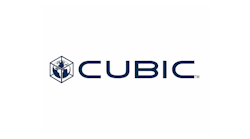Charlotte, NC
Carolyn Flowers
Chief Executive Officer
Charlotte Area Transit System
Public-private partnerships (P3s) are necessary today to navigate through the challenging effects of the economy and maintain momentum in the industry that is moving transit forward. CATS views public-private partnerships as a means to leverage and maximize our assets and resources so we can continue to provide high-quality transit in the Charlotte region now and into the future.
Each public-private partnership is unique and requires a clear vision, stakeholder support and frequent coordination between the public entity and the industry partner. Potential partners need to see how a joint venture not only will benefit the community, but also how joining forces on a project with the transit agency will enhance their organization. A transit agency must be transparent and clearly show they are maximizing resources to gain the trust and buy-in from potential partners and community stakeholders.
CATS has been successful in collaborating on several projects in Charlotte. In 1995 transit formed a partnership with Bank of America to build the Charlotte Transportation Center, CATS main transfer terminal. Bank of America constructed the building on city-owned property and the facility is jointly managed. Most recently CATS received land donations from two educational institutions for our LYNX Blue Line light rail projects. During the design of the LYNX Blue Line, CATS, Mecklenburg County and Charlotte-Mecklenburg Schools agreed on a land swap deal. CATS transformed an unusable ravine by an elementary school at the end of the line into a three-level parking deck topped by a two-acre playing field for the children at the school and in the adjacent neighborhood. Local merchants provided financial support for the Blue Line's signature station in Center City Charlotte and we worked closely with private developers for mixed-use, transit-oriented development surrounding several light rail stations. The proposed Blue Line Extension will end on the University of North Carolina at Charlotte’s campus on land donated by the University.
CATS strategy of developing defined projects with specific needs, goals and benefits, and addressing any potential challenge early in the planning process has proven successful on several occasions. We also realize effective public-private partnerships can deliver a better project than either entity could provide alone. Currently CATS is looking at a P3 design build for the proposed commuter rail line from Center City Charlotte to 25 miles north of the city. Innovative financing is the future of the transit industry and CATS will continue to purse P3s as we move to complete our entire rapid transit system plan.
San Diego, Calif.
Min Wei
Worldwide Vice President, Financial Operations
Cubic Transportation Systems Inc.
Budget shortfalls, shrinking traditional funding sources, aging and under-capacity infrastructure and other challenges are leading more transit operators to form public-private partnerships with the private sector to achieve sustainability and growth. Here is what you should expect in a P3 and some best practices, drawn from Cubic Transportation Systems’ more than 20 years of P3 experience working with leading financial advisors and banks to construct, deliver and service some of the largest projects in the automated fare collection (AFC) industry.
Two prime examples are the world’s largest transit AFC P3 deals, awarded in London (1998) and the Chicago Open Standards Fare System (2011). London’s Oyster Card system, serving more than 10 million transactions a day, is operated and maintained by Cubic. The Chicago Transit Authority’s P3 is a $454 million, 12-year contract to design, build, finance, market, operate and maintain an open payments fare system. The system will allow riders to pay transit fares using contactless bank cards, NFC-enabled mobile phones and other accepted payment media.
The core of a transit sector P3 is a “concession agreement.” This contract specifies the rights and obligations of the public sponsor — the transit agency — and the concessionaire — the private partner. In an AFC system such as Cubic provides, the concessionaire will typically have the responsibility to design, build and finance the project during the construction phase, and then operate and maintain the system once implemented. The concessionaire will collect, deposit and report fare revenues, and in exchange for these services will receive compensation to cover the costs and return on capital. Other common elements include performance requirements with rewards or penalties for the private partner, and termination provisions.
P3 Advantages and Tradeoffs
Transit-related P3s provide many benefits to the transit operators. These include risk transfer, accelerated project delivery, external funding, lower operating costs, and higher non-transit revenues. Risk transfer may be in the form of making the private partner responsible for delivering at a fixed price by a predefined date, for example. Also, project delivery can be accelerated through a design-build contract approach instead of a traditional design-bid-build procurement that adds additional review requirements. Through a P3, a transit agency can transfer the funding responsibility to the concessionaire and help overcome budgetary or capital constraints.
Another benefit is a concessionaire can potentially improve rider experiences and reduce costs by leveraging its know-how and already established service facilities, business processes and partners. In the transit AFC space, for example, some of the key operating costs, such as payment media, bank card fees and cash collection costs, can be transferred to the concessionaire. An experienced private partner will also help a transit agency develop, generate, maximize and share new non-transit incomes streams.
When evaluating whether P3 is right for your agency, ask yourself, and your partner, what tradeoffs should be considered. Evaluating P3 tradeoffs objectively without advocating for one method over another is an important part of Cubic’s value to our clients, just as we normally would as a system integrator and program manager.
Consider the level of day-to-day control you are willing to cede to get the funding, risk transfer and other benefits. If your agency is more interested in building internal capacity and retaining control, a P3 may not be the right approach. Another tradeoff is that changes to the project scope or performance standards will likely require additional costs and possibly schedule changes. Finally, certain risks that concessionaires generally will not assume such as protection against changes in laws and interference or approval delays by third-party governmental entities are retained by the transit agency.
Conclusion: Best Practices
Performance management is an essential success component of the P3 model, giving the transit operators the insight and ability to hold the private partners accountable. The result of a well-structured concession agreement with effective KPIs is an efficiently operated project with the right of the public agency to replace the concessionaire for non-performance. KPIs serve as the basis for payments and ensure a keen focus on achieving the metrics. The concessionaire is also entering into separate contractual arrangements with lenders and vendors to provide financing and operational support, and any deficiency or non-performance could subject the concessionaire to financial penalties.
Atlanta, Ga.
Beverly A. Scott, Ph.D.
General Manager/Chief Executive Officer
Metropolitan Atlanta Rapid Transit Authority
First and foremost, it is absolutely critical to underscore the words “PARTNERSHIP” and “RELATIONSHIP.” These are not deals -- think long-term. At the end of the day, the most effective working relationships are built on trust and mutual respect.
From a big picture perspective, we are actually building a new tradition of working together. For most, our public-private partnership initiatives represent new ways of thinking about how we “work together” and “do business.”
These ventures are bringing together multiple parties, institutional arrangements, financial considerations, business and organizational cultures – with varying degrees of prior experience working together. While they are not the answer for every situation, they are certainly a very important tool in the toolkit. And, we want to learn and get better as we get more experience under our belts.
That said, I hope the following tips are useful.
1. The ultimate shape of the partnership and business relationships should be transparent, provide best value and quality service to the taxpayer. Remember the public is the ultimate customer. And, don’t underestimate the public and political lens that will evaluate these initiatives.
2. Make the upfront time to do “Strategic THINKING” about “what” you are trying to accomplish; and, ”why” you are pursuing a P3. Do your homework. Look at the experiences of others and spend the time to talk with them. Most will be helpful; and, Lessons Learned are invaluable.
Take an internal inventory and think “implementation” from the beginning. Be honest about your organization’s strengths, weaknesses; the appropriate allocation of risks; and, ways to mutually capitalize on opportunities. It is very important to have realistic expectations about what P3’s can help you to accomplish and what they are NOT. Bottom line, this is not free money.
3. "DTR” -- Determine the Relationships! I cannot stress enough the importance and necessity of being clear about your “new” business framework -- defining roles, responsibilities and expectations among the partners. This is a stool with at least three legs: technical requirements; financial and legal considerations; and a host of “people” and “process" considerations – a plethora of general administrative items.
At the end of the day, be as clear as you can about where the authority will reside to make things happen, communications flows and reporting protocols. Particularly in the beginning, it is also extremely helpful to build in decision-making processes that help your new partnership to quickly address issues and responsibly correct course when needed.
4. Assemble your project team to include key personnel that are “problem solvers” and have the skill set and temperament to be collaborative. While challenging, the technical issues are often easier to address than the people and organizational dynamics. Egos are best left at the door. Public confidence is always important. To that end, avoid agency discord and grandstanding. You want a team with plenty of healthy constructive tension that is focused on figuring it out.
5. Finally, be clear about “total” projects costs and make your decision on best value – not just the lowest cost; pay extremely close attention to project monitoring and oversight; and be open to consider innovation in all aspects of the project.





